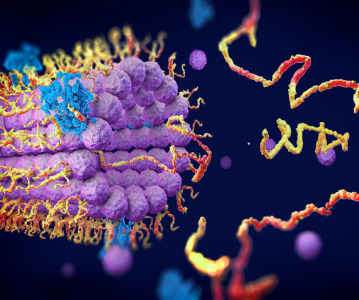Non-opiate painkiller, AnestaGel, found superior in preclinical tests

AnestaGel uses a novel approach to delivering sustained-released analgesics into the target tissue via the Matrix, which is a tunable, biocompatible, and pH neutral platform.
InSitu Biologics has announced results from recent pre-clinical studies for its lead product, AnestaGel. AnestaGel is a long-lasting and long-acting non-opiate painkiller, targeted for use in peri-operative regional pain management.
In a series of independent tests performed under GLP regulations, comparing operative site injections of AnestaGel and Exparel from Pacira, AnestaGel was proven to last longer, and provide a greater analgesic effect than Exparel. In a separate test that determines the PharmacoKinetic(PK) effect for the painkiller bupivacaine, which is used in both AnestaGel and Exparel, bupivacaine was proven to be released from AnestaGel into the blood up to 96-120 hours after injection exceeding the presence of bupivacaine in the blood from both Exparel and straight bupivacaine injections.
"As we had hypothesized going in to these studies, we expected that AnestaGel would perform very well when compared to the non-opiate products available today," said Dr Jake Hutchins, Director of the Regional Anesthesia Acute Pain and Ambulatory Surgery division at the University of Minnesota, and the Pre-Clinical Study Director for InSitu Biologics. James Segermark, CEO of InSitu added: "Early on we believed that AnestaGel could be tuned to act as a short-term reservoir, essentially a non-pulsatile organ, and that is what we have now verified and validated. We look forward to the next steps that will bring this predictable, very long-acting, non-opiate product to patients that face the prospect of post-surgical pain." The company believes that AnestaGel could be used in three distinct markets for peri-operative pain management that represent nearly $31 billion in annual revenue in the US.
AnestaGel uses a novel approach to delivering sustained-released analgesics into the target tissue via the Matrix, which is a tunable, biocompatible, and pH neutral platform. This allows AnestaGel to provide target site-specific, non-migratory placement, a flexible and high dose drug-load reservoir capacity, and a tunable and predictable pharmacological effect.
Related News
-
News CPHI Podcast Series: The power of proteins in antibody drug development
In the latest episode of the CPHI Podcast Series, Lucy Chard is joined by Thomas Cornell from Abzena to discuss protein engineering for drug design and development. -
News Amgen sues Samsung biologics unit over biosimilar for bone disease
Samsung Bioepis, the biologics unit of Samsung, has been issued a lawsuit brought forth by Amgen over proposed biosimilars of Amgen’s bone drugs Prolia and Xgeva. -
News CPHI Podcast Series: Why we need to consider women in clinical trials
The latest episode of the CPHI Podcast Series with Lucy Chard covers women's health, specifically women's representation in clinical trials, the associated bias, and the impacts on health for this population. -
News US FDA does not approve MDMA therapy for PTSD, requests more data
The MDMA-based therapeutic developed by Lykos Therapeutics, a California-based Public Benefit Corporation (PBC), has been reviewed and unapproved by the US FDA. The regulator has requested additional phase III trial data for further safety and efficacy... -
News Novartis and Viatris latest facing lawsuit over HeLa cell misuse
Global pharmaceutical companies Novartis and Viatris are the latest hit with a lawsuit claim pertaining to alleged misuse of the ‘HeLa’ cell line from the estate of woman whose cancerous tissue cells were taken without consent. -
News Sanofi invests billions into Frankfurt insulin production site
French pharmaceutical company Sanofi have announced an investment of EUR1.3 billion at their existing BioCampus site in Frankfurt am Main for the expansion of insulin production. -
News Novel oral Type 1 diabetes drug gains US FDA IND designation
A University of Alabama at Birmingham startup has gained FDA clearance for Investigational New Drug clinical trials for an oral Type 1 diabetes drug, a milestone for diabetes treatment. -
News A Day in the Life of a Vice President in R&D & Engineering
In the Day in the Life of Series, we've already had the chance to get to know a range of people in various roles in the pharma industry. In the latest interview we get a glimpse into the R&D side of things from Jennifer Sorrells, Vice Presiden...
Position your company at the heart of the global Pharma industry with a CPHI Online membership
-
Your products and solutions visible to thousands of visitors within the largest Pharma marketplace
-
Generate high-quality, engaged leads for your business, all year round
-
Promote your business as the industry’s thought-leader by hosting your reports, brochures and videos within your profile
-
Your company’s profile boosted at all participating CPHI events
-
An easy-to-use platform with a detailed dashboard showing your leads and performance

.png)

.png)
.png)
.png)
.png)
